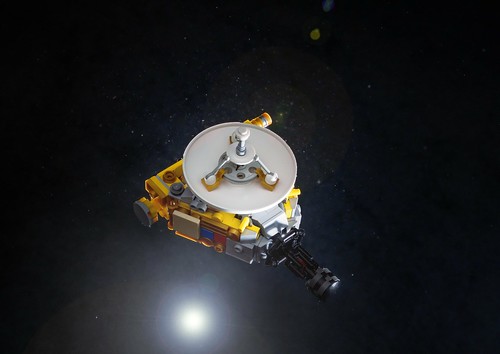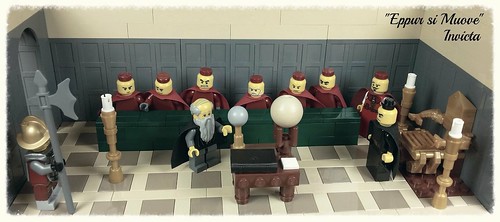
Wednesday, December 16, 2015
Eppur si muove
The conflict between Galileo and the Catholic church has been a constant topic in discussions of the relationship between science and faith. One extreme characterization is that scientists held that the earth orbited the sun, but the church denied this based solely on interpretations of the Bible. At the other end, some would say that there was a long dispute among scientists/philosophers about the best model of the universe, and in his defense of a heliocentric system Galileo went out of his way to antagonize and ridicule the pope, who held the opposite view. The truth probably lies somewhere in the middle, but in 1633 Galileo was called before the Inquisition to defend his views. Popular legend holds that after renouncing the Copernican model that the earth goes around the sun, Galileo muttered "eppur si muove" (but it still moves) under his breath - here in LEGO form by Jimmy Clinch.


Sunday, December 13, 2015
Space Walk
The Gemini 4 mission (here by Shannon Sproule) in 1965 featured the first space walk, or extravehicular activity (EVA) by an American, Edward White.
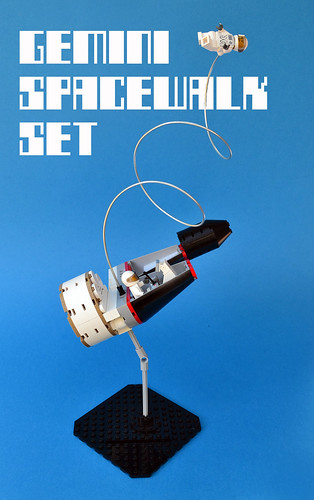

Tuesday, October 13, 2015
Atomic structure
Homeschooler Susan Evans came up with LEGO atomic structure to teach chemistry to kids. The red bricks are protons, the black ones are neutrons, and the blue bricks are electrons (note how they are divided up into energy levels). These represent, respectively, neutral oxygen and neon atoms.
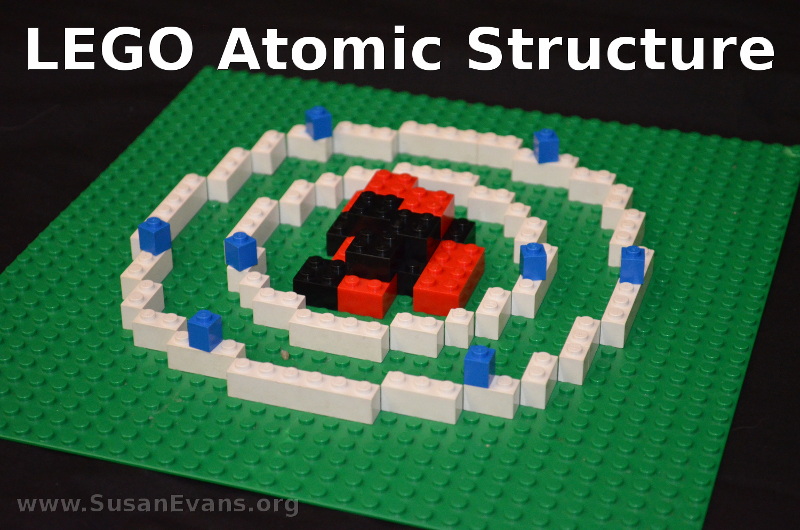
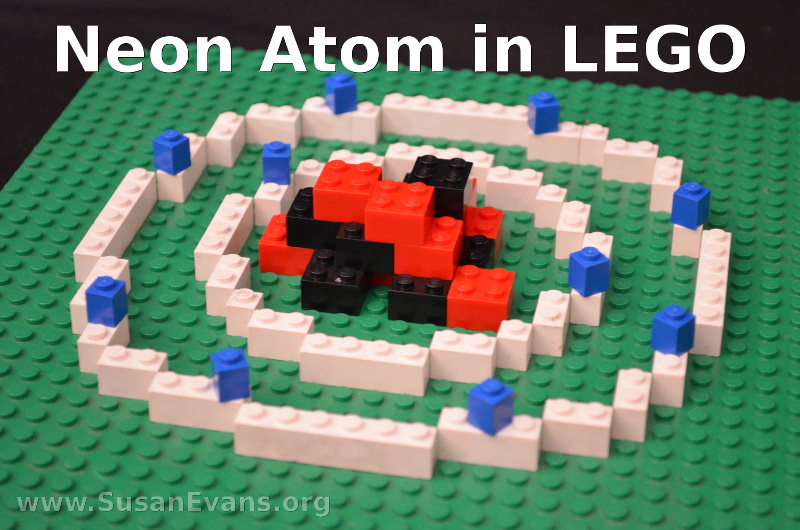


Thursday, September 3, 2015
Impossible waterfall
A couple of years ago when that big LEGO Architecture Studio set came out Tom Alphin decided to create a 30 day challenge for himself and his readers. Day 12's challenge was to Build and photograph an impossible Escher model out of Lego. He came up with a LEGO rendition of Escher's Waterfall, a scene that others have also tried.
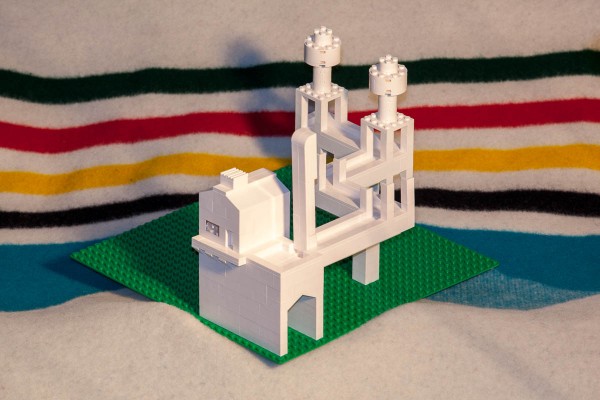



Thursday, August 27, 2015
Waveform
Light and sound can be described as waves traveling through some medium. A simple wave can take an easily described form such as a sine function, but if you put a bunch of waves together, such as a burst of many wavelengths of light or a musical chord, the waves add together in constructive and destructive ways to get a much more complex waveform, such as this shown by Matt De Lanoy. I wonder if you can perform a fourier transform on a stack of LEGO elements.


Wednesday, August 19, 2015
Friday, August 14, 2015
Lab competition
Seen via Brickset: Chemistry lab equipment manufacturer Radleys is holding a Build a Lego Lab contest! Read the article for full rules and details, but here are the highlights:
-Your lab could be either realistic or fantasy based (e.g. they suggest ideas including Marie Curie's experiments with uranium, or a Frankestein's monster setup)
-Adult and kid categories
-International competition, so you don't have to be in the UK to compete
-Winners will get a gift certificate to a LEGO Store or Lego.com
Let me know if you enter, and I'll feature your MOC here as well. I fully expect a SciBricks reader to win this.

-Your lab could be either realistic or fantasy based (e.g. they suggest ideas including Marie Curie's experiments with uranium, or a Frankestein's monster setup)
-Adult and kid categories
-International competition, so you don't have to be in the UK to compete
-Winners will get a gift certificate to a LEGO Store or Lego.com
Let me know if you enter, and I'll feature your MOC here as well. I fully expect a SciBricks reader to win this.

Friday, August 7, 2015
Ames room
Kai NRG/Geneva built an Ames room. This is an optical illusion where the room is distorted, but your mind assumes that it is actually square, and so objects on one side look much smaller relative to the ceiling, but objects on the other side look much larger. In a true Ames room, the left-hand side of this scene should be much further from the viewer, which leads to a more perfect illusion because both the effect of distance and the trapezoidal shape of the room add to the effect.
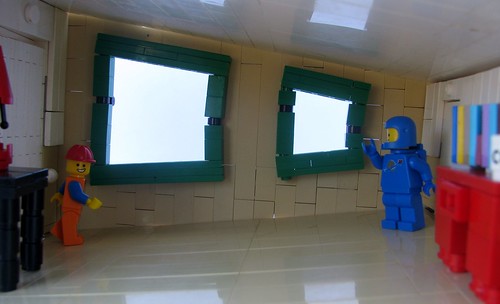

Wednesday, August 5, 2015
Illusive Hobbit Diner
The illusive Hobbit Diner by Letranger Absurde is an example of the 'cafe wall illusion', where the pattern of white and black blocks makes straight lines look crooked. I previously explained how this illusion works. BTW, for me the illusion works better in the scene with a bare floor as for me the various details tend to distract the eye and break the illusion.


Tuesday, July 28, 2015
Okay, I know you were begging for more New Horizons ...
... so here you go, this one by Stefan Schindler.
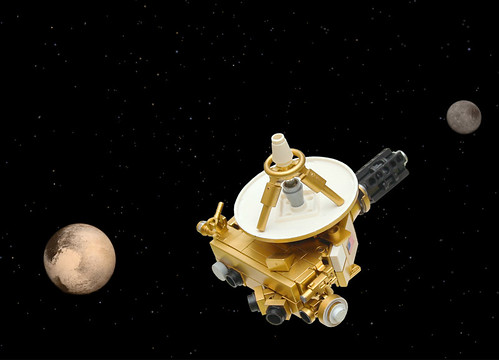
BTW, as long as we're here, I know this isn't LEGO but I just had to share this from Gary Davis. "So that's why the planet was called Pluto!"
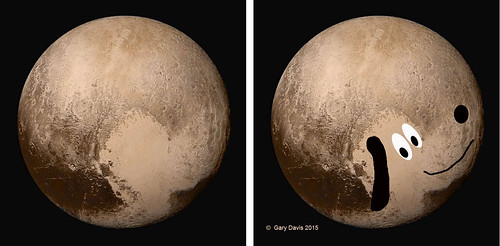

BTW, as long as we're here, I know this isn't LEGO but I just had to share this from Gary Davis. "So that's why the planet was called Pluto!"

Thursday, July 23, 2015
Apollo 11
Saabfan celebrated the Apollo 11 mission 46 years ago (tomorrow is the anniversary of their return to earth) in LEGO form.
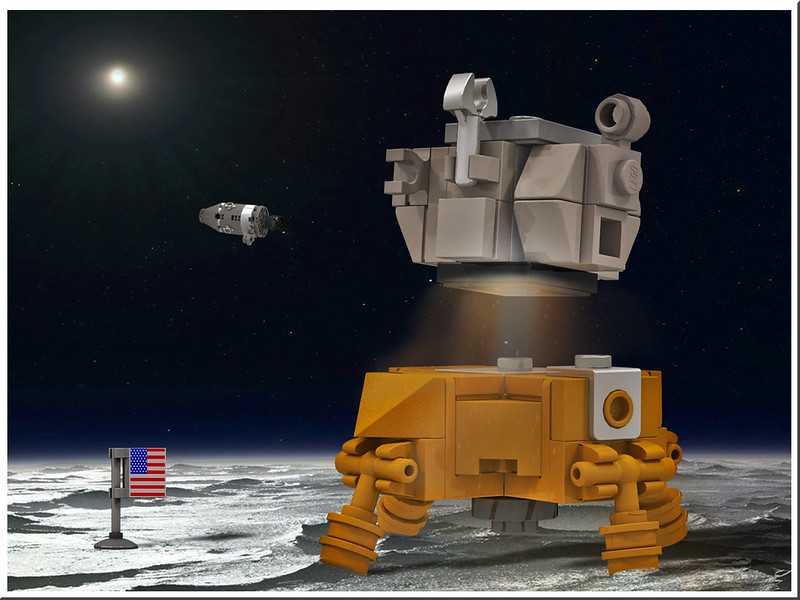





Friday, July 17, 2015
Thursday, July 16, 2015
Wednesday, July 15, 2015
New Horizons
Yesterday, the New Horizons probe was the first ever* probe to pass by the planet** Pluto, sending back photos and other data about our distant cousin. No word yet if they found a giant cartoon dog. In commemoration of this event, Iain Heath built a LEGO rendition.
*First human-built, that is. I'm not making any claims about alien probes coming from the opposite direction.
**I know, I know, I should say dwarf planet, but when I was a kid our solar system had nine planets, and that's how it's always going to be for me.
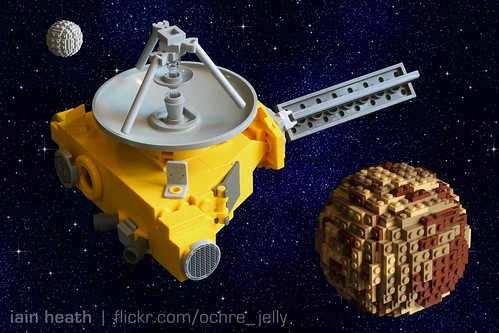
*First human-built, that is. I'm not making any claims about alien probes coming from the opposite direction.
**I know, I know, I should say dwarf planet, but when I was a kid our solar system had nine planets, and that's how it's always going to be for me.

Friday, July 3, 2015
Materials Science and Engineering
Okay, that big rant yesterday was originally going to be the lead-in to this post, but I didn't want to taint this nice MOC with my grumpyness. Brick Lab designed this great Materials Science and Engineering instrumentation. The setup includes a scanning electron microscope, a transmission electron microscope, and an X-ray diffractometer. What I really like about this project is that Brick Lab really goes out of the way to educate the reader, labeling the different parts of the instruments and linking to videos about how they work.






Thursday, July 2, 2015
LEGO Ideas
I wanted to talk a bit about LEGO Ideas If you don't know, LEGO Ideas (formerly known as LEGO Cuusoo) is a crowdsourcing site where anyone can submit a LEGO creation, and if enough people vote for it, LEGO will consider making it into a set. LEGO Ideas has been very good to science fans like me, and presumably you, bringing us science-themed sets like Shinkai 6500 Submarine, Hayabusa, NASA Mars Science Laboratory Curiosity Rover, and Research Institute, and you could probably include Birds and Big Bang Theory in the mix. So I can't really hate Ideas, but I kind of hate Ideas. The reason is that it's largely a false hope. Yes, they have chosen to make 13 really cool sets. But they've also rejected tens of thousands in the process (a little over a year ago they noted there were 60,000+ projects, and it's only grown since then). So the bad news about Ideas is, well, your set isn't going to be made. Not that it's not possible, but it's kind of like buying a lottery ticket. You're not going to win. Sure, somebody is going to win, but I can say with a high degree of certainty that it's not you. But LEGO Ideas has essentially tricked people into thinking that they have a shot at having their MOC turned into a set.
That might not be so bad, but I think that the whole project has hurt the online LEGO community. If people just kept on doing what they were doing before, building MOCs, posting them on community sites, and discussing them, but occasionally put a nice MOC up on Ideas, that would be fine (I should note, the people who have had MOCs turned into sets mostly are like this). But there are a certain number of people who have disengaged from the community, instead turning themselves into promotion machines for their Ideas submissions. As someone with LEGO themed blogs and who administers a LEGO community forum, I can't tell you how many requests I've gotten to push someone's Ideas submission. And these are mostly from people who seemingly have no interest whatsoever in those blogs or that forum. And there are people who spend a lot of time in the comment threads of the Ideas projects, but that's time they don't spend in real community forums (largely anonymous linear comment threads just cannot be the same).
In addition to the actions of a portion of the submitters, my even bigger frustration with Ideas is that the larger public just doesn't get it at all. I can't tell you how many news stories I've seen that say "____ is going to be a LEGO set", and then when you go to the link it basically comes down to "some random person posted something on the internet". And then, of course, things get repeated in the echo chamber of the internet, as one news source just repeats what another said and no one fact-checks (because, hey, in the world of internet news, there's no need for actual fact checking). Even in the rare case that a submission gets the 10000 votes, it still has about a 10-20% chance of being a set, which of course it means it has about a 90% chance of NOT being a set. But still, every time something gets to 10000 there are stories all over the internet about how that is going to be the next LEGO set. That's actually what prompted this rant, seeing story after story about what the 'next LEGO set' was going to be, and getting excited about blogging it here.
So, I go back and forth about posting Ideas submissions here. I don't really want to be a shill, either for those individuals (as worthy as they might be), or more importantly for the whole Ideas enterprise, which I am very skeptical of. I would much rather those people had posted their MOCs to Flickr, MOCpages, Brickshelf, or some other LEGO photo-sharing site. That said, if someone only posted their MOC on Ideas, I don't want to not share it if it is a really nice MOC. So I'm basically conflicted.
All that said, I want to repeat again that Ideas has been very good to the science LEGO builder. Almost half of the sets that have come out have been science-themed to a greater or lesser extent. So to get over my grumpyness, let's check those out:

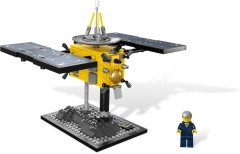


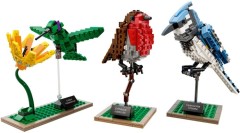

That might not be so bad, but I think that the whole project has hurt the online LEGO community. If people just kept on doing what they were doing before, building MOCs, posting them on community sites, and discussing them, but occasionally put a nice MOC up on Ideas, that would be fine (I should note, the people who have had MOCs turned into sets mostly are like this). But there are a certain number of people who have disengaged from the community, instead turning themselves into promotion machines for their Ideas submissions. As someone with LEGO themed blogs and who administers a LEGO community forum, I can't tell you how many requests I've gotten to push someone's Ideas submission. And these are mostly from people who seemingly have no interest whatsoever in those blogs or that forum. And there are people who spend a lot of time in the comment threads of the Ideas projects, but that's time they don't spend in real community forums (largely anonymous linear comment threads just cannot be the same).
In addition to the actions of a portion of the submitters, my even bigger frustration with Ideas is that the larger public just doesn't get it at all. I can't tell you how many news stories I've seen that say "____ is going to be a LEGO set", and then when you go to the link it basically comes down to "some random person posted something on the internet". And then, of course, things get repeated in the echo chamber of the internet, as one news source just repeats what another said and no one fact-checks (because, hey, in the world of internet news, there's no need for actual fact checking). Even in the rare case that a submission gets the 10000 votes, it still has about a 10-20% chance of being a set, which of course it means it has about a 90% chance of NOT being a set. But still, every time something gets to 10000 there are stories all over the internet about how that is going to be the next LEGO set. That's actually what prompted this rant, seeing story after story about what the 'next LEGO set' was going to be, and getting excited about blogging it here.
So, I go back and forth about posting Ideas submissions here. I don't really want to be a shill, either for those individuals (as worthy as they might be), or more importantly for the whole Ideas enterprise, which I am very skeptical of. I would much rather those people had posted their MOCs to Flickr, MOCpages, Brickshelf, or some other LEGO photo-sharing site. That said, if someone only posted their MOC on Ideas, I don't want to not share it if it is a really nice MOC. So I'm basically conflicted.
All that said, I want to repeat again that Ideas has been very good to the science LEGO builder. Almost half of the sets that have come out have been science-themed to a greater or lesser extent. So to get over my grumpyness, let's check those out:






Monday, June 8, 2015
LEGO Elements
Students and faculty at Spring Arbor University built this LEGO periodic table. The fun thing is that they then illustrated each of the elements. If you click on the periodic table on the site, you'll learn little facts about each one.
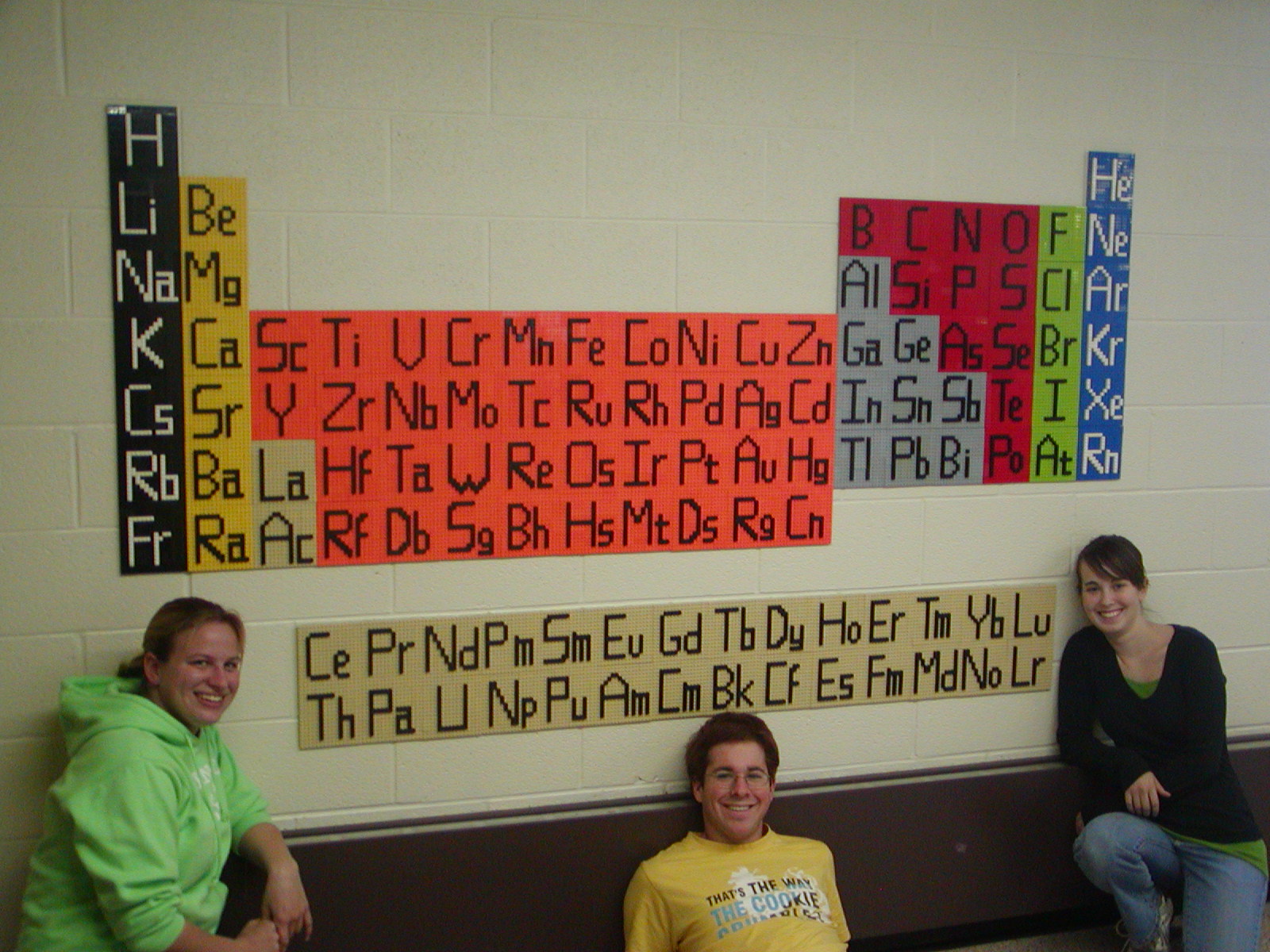
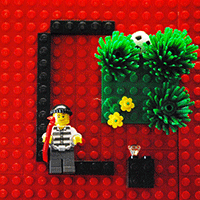
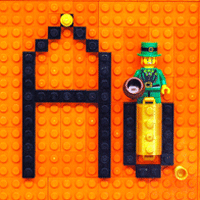



Monday, March 30, 2015
Earth and Moon
Adam Dodge built Earth and Moon, a small orrery showing the rotation of the earth and the orbit of the moon. You can see a video of it in action here.


Thursday, March 19, 2015
Stepping on a LEGO
Karl Smallwood of Today I Found Out investigated Why Does Stepping On A LEGO Hurt so Much? He starts by noting that the soles of the feet are highly sensitive, which helps us balance, and then he analyzes how much force stepping on a LEGO leads to. Here are the key paragraphs:
To illustrate, here's a cartoon by ILoveDoodle.
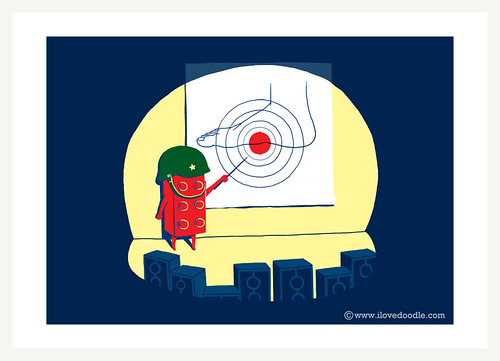
For an example, a standard 2×2 Lego brick has a surface area of roughly 2.25 centimetres squared (for the sake of simplicity we’ll ignore the studs, which certainly aren’t going to help matters for your foot anyway). Let’s say a person weighing 75 kilos (165 pounds or 734 Newtons) steps onto it.
Now, the pressure on a given object is equal to the force applied divided by the area over which it is spread (P=F/A). So even if that 75 kilo person were just standing on the Lego with one foot, rather than having their foot accelerating downward at some rate as with walking, this gives us 734 N/0.000225 m2 = roughly 3,262,222 pascals of pressure! For reference, that is roughly 32 times standard atmospheric pressure, all suddenly forcing its knobbly, unforgiving way against one of the most sensitive regions of the body.
To illustrate, here's a cartoon by ILoveDoodle.

Tuesday, March 17, 2015
Albert Einstein
In addition to being Pi Day, March 14 is also Albert Einstein's birthday. Einstein is easily the most recognizable scientist of the 20th century. His theory of relativity helped move us from Newtonian physics into the modern era. He received the 1921 Nobel in physics for his work on the photoelectric effect, but more broadly on all of his work in physics. He helped start the Manhattan Project by signing a letter to President Roosevelt about the potentially devastating nature of atomic bombs. Since he is such a key figure, and also so recognizable, he has been the inspiration for a great number of LEGO renditions. Here are just a handful of ones I found.
This mosaic (by who?) was on display at BrickWorld this past weekend.
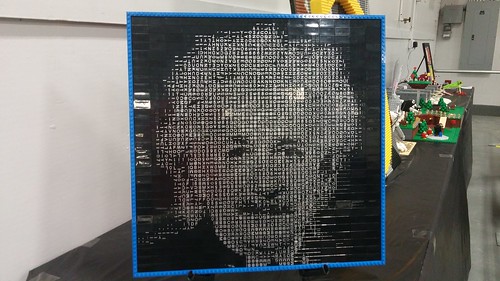
Arthur and Laura Sigg built this mosaic.

Here's a miniland version by Annie1.

This huge sculpture is found in Legoland Florida (and there are similar sculptures at other Legolands as well).
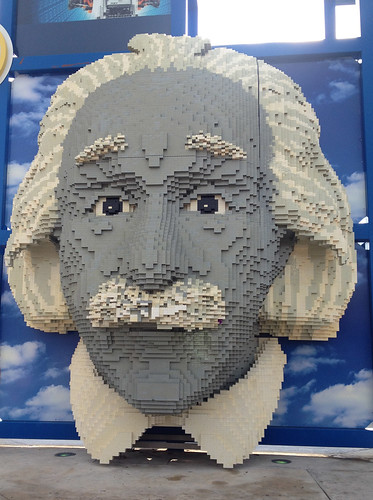
There are tons of other LEGO Einsteins out there, but I'll save them for another time. Maybe next year's birthday.
This mosaic (by who?) was on display at BrickWorld this past weekend.

Arthur and Laura Sigg built this mosaic.

Here's a miniland version by Annie1.

This huge sculpture is found in Legoland Florida (and there are similar sculptures at other Legolands as well).

There are tons of other LEGO Einsteins out there, but I'll save them for another time. Maybe next year's birthday.
Saturday, March 14, 2015
Happy Pi Day
Happy Pi Day (3-14-15). Pi is an irrational number that is the ratio of a circle's circumference to its diameter. The first five digits are 3.1415. Here are various LEGO commemorations.
Bill Ward

Kristi
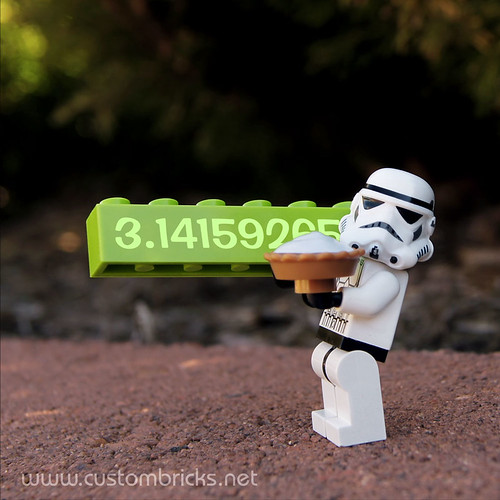
Legosam1234

Oscar Romero

Lesgo LEGO Movie
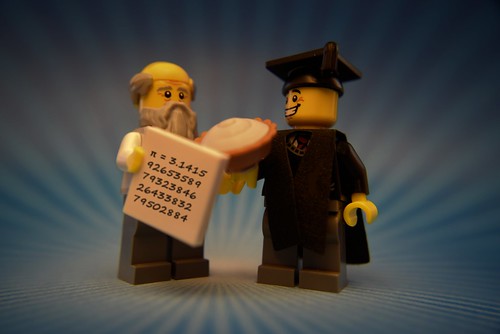
Bill Ward

Kristi

Legosam1234

Oscar Romero

Lesgo LEGO Movie

Subscribe to:
Comments (Atom)





